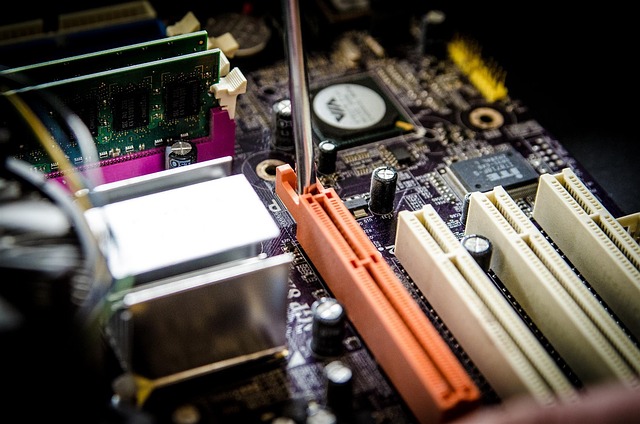
Modern Vehicles is the evolution of cars into sophisticated technological devices marks a major shift from their original role as purely mechanical machines to modern feats of digital engineering. Over time, innovations have profoundly transformed the automotive industry, introducing complex features and autonomous capabilities. Modern vehicles now include advanced driver-assistance technologies (ADAS), cutting-edge infotainment systems, and seamless digital connectivity, essentially operating as mobile computers. This fusion of automotive engineering and digital technology enhances both safety and convenience. It also paves the way for self-driving vehicles and smart transportation networks, redefining our perception of mobility. World BI hosts leading conferences on the Digital Revolution in Connected Cars, showcasing the latest developments in automotive technology and evolution.
Technological integrations in cars include state-of-the-art systems such as driver-assistance tools, touchscreen infotainment interfaces, connectivity solutions, digital dashboards, and enhanced safety mechanisms. These innovations boost safety, convenience, and connectivity, while supporting eco-friendly solutions through electric and hybrid vehicles. Collectively, these advances turn automobiles into intelligent, connected, and safer modes of transportation in today’s high-tech era.
Read more about You can stay fit
Read more about Modern vehicles
Importance of Technology in Modern Vehicles
Technology plays an essential role in today’s vehicles, greatly enhancing performance, safety, and the overall driving experience.
Advanced driver-assistance features (ADAS), such as lane departure warnings and automatic emergency braking, boost safety by helping drivers prevent collisions and maintain vehicle control.
Entertainment and navigation systems with touchscreens, GPS, and smartphone compatibility offer convenience and enjoyment, making driving smoother and more efficient.
Connectivity options like Wi-Fi, Bluetooth, and mobile applications allow seamless communication and access to real-time updates, increasing productivity while on the move.
Overall, technology in modern vehicles not only improves safety and convenience but also drives innovation toward smarter, connected, and eco-friendly transportation.
Early Automotive Technological Developments
Early technological advancements in automobiles have played a key role in shaping today’s cars.
Simple electronic features, like car radios and power windows, were among the first innovations to enhance driver and passenger comfort.
The invention of fuel injection systems and catalytic converters marked important progress by increasing fuel efficiency and reducing emissions, contributing to both performance and environmental protection.
Furthermore, the introduction of anti-lock braking systems (ABS) and airbags revolutionized safety, with ABS preventing wheel lock during braking and airbags providing vital protection in crashes.
These innovations not only improved the driving experience but also laid the foundation for ongoing automotive advancements focused on safety, efficiency, and environmental responsibility.
The Digital Transformation in Automobiles
The digital transformation of cars has introduced a new era in automotive technology, changing how vehicles operate and interact with drivers and passengers.
Digital instrument clusters and onboard computers have replaced traditional analog meters, providing customizable displays of crucial vehicle information and diagnostics in real time.
GPS and navigation systems have transformed route planning, offering precise directions, live traffic updates, and alternative paths for optimal travel.
Modern infotainment systems have further enhanced driving by combining entertainment, communication, and connectivity in user-friendly interfaces.
These systems include touchscreens, seamless smartphone integration, and voice command features, making driving more convenient and enjoyable.
Together, these innovations improve safety, efficiency, and connectivity, reflecting the ongoing digital evolution that is shaping the future of automotive technology.
Connectivity and the Internet of Things (IoT)
Connectivity and IoT have transformed automobiles by enabling smooth interaction with the Internet and other devices.
Connected car technologies provide capabilities like remote engine start, real-time vehicle diagnostics, and wireless software updates, improving convenience and proactive maintenance (A, B).
The introduction of 5G and faster internet speeds has further enhanced car connectivity, boosting features such as navigation, semi-autonomous driving, and integration with smart home systems and cloud platforms (C).
This evolution highlights how cars have become intelligent, interconnected systems, enriching both functionality and the user experience in today’s automotive world.
Autonomous Driving Technologies
Autonomous driving systems have advanced rapidly, supported by innovations in driver-assistance technologies like adaptive cruise control and lane-keeping assistance (A).
Efforts to develop fully self-driving vehicles (B) are accelerating, using AI and sensor networks to navigate without human input.
However, issues (C) including safety, liability, and regulatory hurdles remain critical and must be carefully addressed for widespread adoption.
Despite these challenges, autonomous technologies have the potential to transform transportation, offering safer and more efficient mobility solutions.
Electric Vehicles (EVs) and Sustainability
Electric vehicles signify a major shift toward eco-friendly transportation, propelled by improvements in battery technologies and a growing charging infrastructure.
EVs provide better range, performance, and cost-effectiveness, while benefiting from renewable energy integration and smart grid connectivity.
Although they reduce emissions and reliance on fossil fuels, challenges such as battery production and recycling remain, requiring ongoing innovation to achieve genuine sustainability.
Advanced Safety Features
Modern automotive safety has been revolutionized by cutting-edge technologies.
Advanced driver-assistance systems (ADAS), including adaptive cruise control and automatic emergency braking, help prevent accidents by offering real-time alerts and automated interventions.
Vehicle-to-everything (V2X) communication further improves safety by allowing cars to exchange critical data with other vehicles, infrastructure, and pedestrians, enhancing situational awareness and traffic management.
Together, these innovations not only boost driver safety but also contribute to smarter, more resilient transportation networks, shaping a safer and more efficient future.
User Experience and Personalization
Personalization and user experience are now key aspects of modern car design, changing the way drivers interact with vehicles.
Adjustable driving modes and settings let drivers customize their experience, modifying aspects such as steering sensitivity and suspension to match personal preferences and road conditions.
Voice recognition and AI systems allow intuitive, hands-free control of navigation, media, and communication functions.
AI-powered virtual assistants adapt to user behavior, offering personalized suggestions while enhancing safety by reducing distractions.
Additionally, tailored comfort and entertainment options, such as adjustable seats and customized media choices, provide a more enjoyable and ergonomic experience for passengers.
These developments not only improve convenience and satisfaction but also reflect a larger trend toward more intuitive, user-focused automotive experiences in today’s technology-driven environment.
The Role of Electronic Gadgets in Modern Life
Electronic gadgets have become a vital part of our everyday routines, influencing how we communicate, work, learn, and enjoy entertainment. Over the past few decades, the development and adoption of these devices have grown at an unprecedented rate. This article explores the various ways electronic gadgets have become essential in today’s world.
Communication and Connectivity
One of the most impactful contributions of electronic gadgets is in communication and connectivity. Devices such as smartphones, tablets, and laptops have transformed the way we interact with others. They allow us to make calls, send messages, and engage on social media, fostering global connections and creating a more interconnected world.
Access to Information and Learning
The internet, along with electronic gadgets, has revolutionized how we access knowledge and learn. E-readers, tablets, and educational apps make digital books and resources easily available. Online courses and virtual classrooms have opened doors for learners of all ages and backgrounds, breaking down the traditional barriers to education.
Entertainment and Media Consumption
Electronic gadgets have also changed how we enjoy media and entertainment. Streaming platforms, gaming consoles, and smart TVs provide convenient access to movies, TV shows, music, and games. Emerging technologies like virtual reality (VR) and augmented reality (AR) are taking entertainment to an immersive new level.
Health and Fitness
Wearable gadgets have become invaluable for maintaining health and fitness. Fitness trackers, smartwatches, and health monitoring devices allow users to track activity levels, monitor vital signs, and adopt healthier habits. Many of these devices sync with mobile apps, offering useful feedback and insights.
Productivity and Work
The workplace has been transformed by electronic gadgets. Laptops, tablets, and smartphones enable remote work, providing greater flexibility and improving work-life balance. Productivity apps and software tools help streamline tasks, making businesses and employees more efficient.
Smart Home Technology
The Internet of Things (IoT) has paved the way for smart home innovations. Devices like smart thermostats, voice-controlled assistants, and connected appliances allow users to automate and manage household tasks. This technology enhances convenience, saves energy, and boosts home security.
Travel and Navigation
GPS-enabled devices and navigation gadgets have made traveling simpler and more efficient. Real-time maps, directions, and transport information make it easier for people to explore unfamiliar areas with confidence.
Sustainability and Energy Efficiency
Electronic gadgets are also supporting sustainable practices. Solar-powered chargers, energy-efficient devices, and smart energy management systems help reduce environmental impact, contributing to a greener lifestyle.
Personal Assistance
Voice-activated assistants, including Siri, Alexa, and Google Assistant, have become everyday helpers. They assist with tasks, answer questions, control smart home devices, set reminders, provide weather updates, and play music, making life more convenient.
Innovation and Future Trends
The pace of innovation in electronics shows no signs of slowing. Technologies such as 5G, artificial intelligence, and quantum computing are poised to redefine how we use gadgets. The future promises even more advanced, interconnected devices that will continue to enhance daily life.
Electronic gadgets have become integral to modern life, transforming communication, work, learning, and entertainment. Their influence extends beyond personal convenience, impacting industries, economies, and society as a whole. As technology continues to advance, electronic gadgets will create new opportunities and challenges, shaping the way we live and interact with the world.





